Securing your first business analyst role can be challenging when most job postings require experience.
Many entry-level candidates worry about competing without a professional background.
A well-structured entry-level business analyst resume can effectively showcase your potential.
You will understand the key sections to include, proper structuring techniques, common mistakes to avoid, and complete resume examples.
You will learn how to effectively highlight your analytical skills, relevant coursework, and transferable experience gained from internships or projects.
Let’s build a resume that gets you noticed.
Key Sections to Include in Your Resume
Your entry-level business analyst resume needs specific sections to stand out. Each section serves a purpose in showing your potential to employers.
Here’s what to include and why it matters-
Contact Information: Include name, phone, professional email, LinkedIn profile, and city/state. Add portfolio URL if you have data analysis projects.
Professional Summary: Position yourself as an analytical problem-solver. Highlight data analysis experience, business process understanding, and technical skills that create business value.
Key Skills: Focus on business analysis technical skills (requirements gathering, process mapping, SQL, Excel, data visualization) and BA soft skills (stakeholder management, requirements elicitation, business case development).
Education: Emphasize coursework in business processes, data analysis, and systems thinking. Highlight academic projects analyzing business problems or working with data.
Professional Experience: Convert any work into BA-relevant skills. Show data analysis, process improvement, stakeholder communication, and problem-solving from any role.
Certifications: Include BA-specific certifications like ECBA, CAPM, Google Analytics, Agile Analysis, Excel Expert, or Six Sigma Yellow Belt.
See how to craft your technical writer resume. Click here!
Structuring Tips for Your Resume for Maximum Impact
The way you organize your entry-level business analyst resume demonstrates your ability to present information clearly, a core business analyst skill.
Formatting Essentials:
- Use clean, professional formatting with Arial or Calibri fonts (10-12 pt)
- Include bold headers, consistent bullet points, and white space
- Ensure ATS compatibility with standard section headers
- Save as both PDF and Word formats
Resume Tailoring:
- Match job description keywords exactly
- Use their terminology (“requirements gathering” vs. “collecting requirements”)
- Research the company industry and align relevant coursework
- Study their business challenges and technology focus
Action Words and Metrics:
- Use BA-specific verbs: analyzed, documented, facilitated, evaluated, collaborated
- Include numbers in every role: “reduced costs by 18%” vs. “helped reduce costs”
- Focus on business impact rather than just activities
- Turn academic projects into quantifiable achievements
Entry-Level Business Analyst Resume Samples
Check out this entry-level business analyst resume PDF to see how to highlight your skills and experience effectively.
Here are some sample resumes for you to take reference from:
1. Sample Resume for Transferable Skills
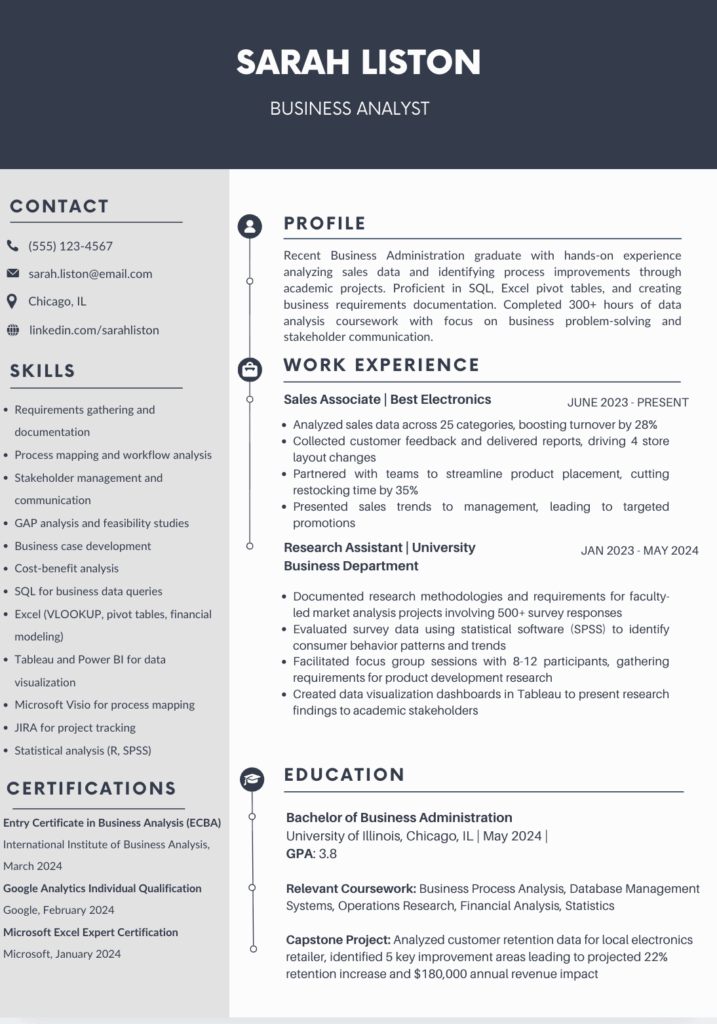
2. Sample Resume for Showcasing Personal Projects
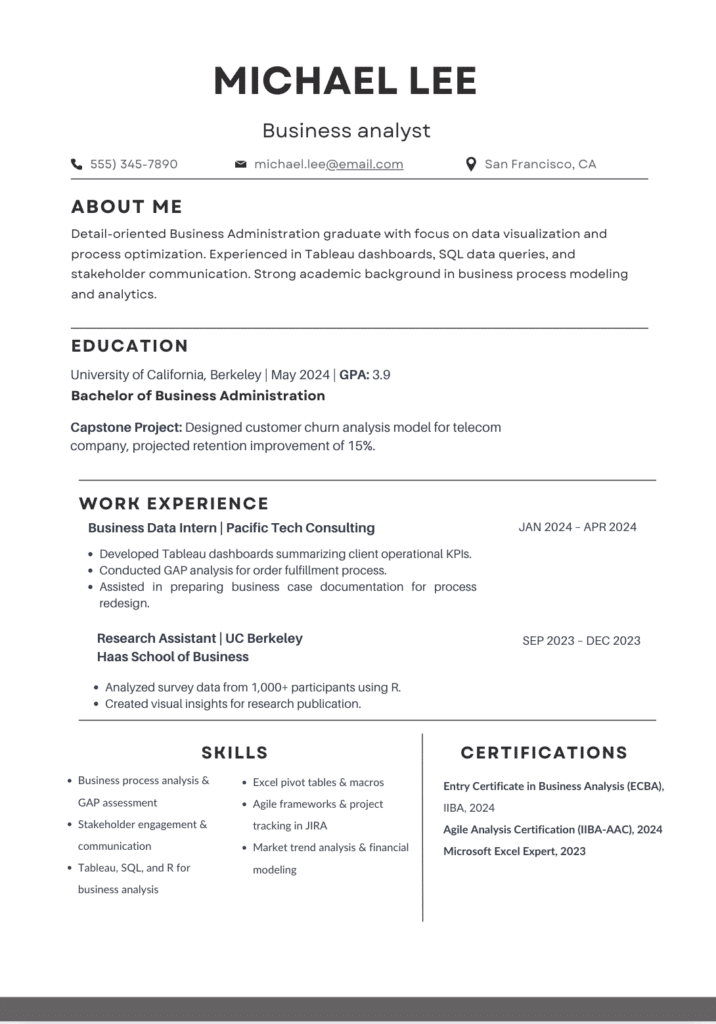
3. Sample Resume Featuring Volunteer Experience
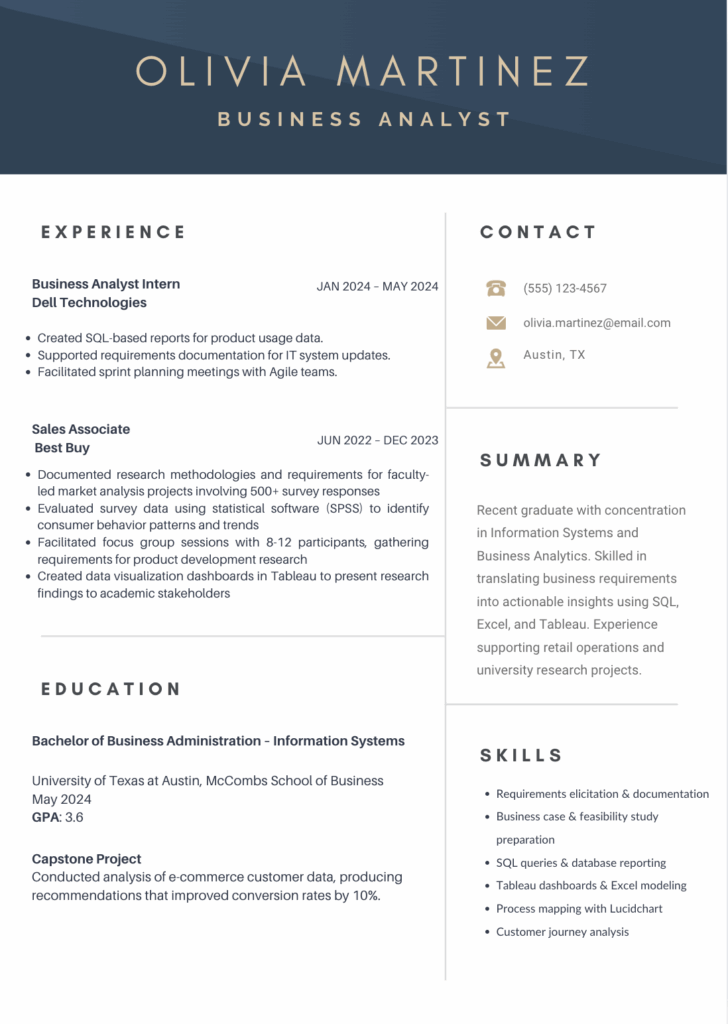
4. Sample Resume for Freshers
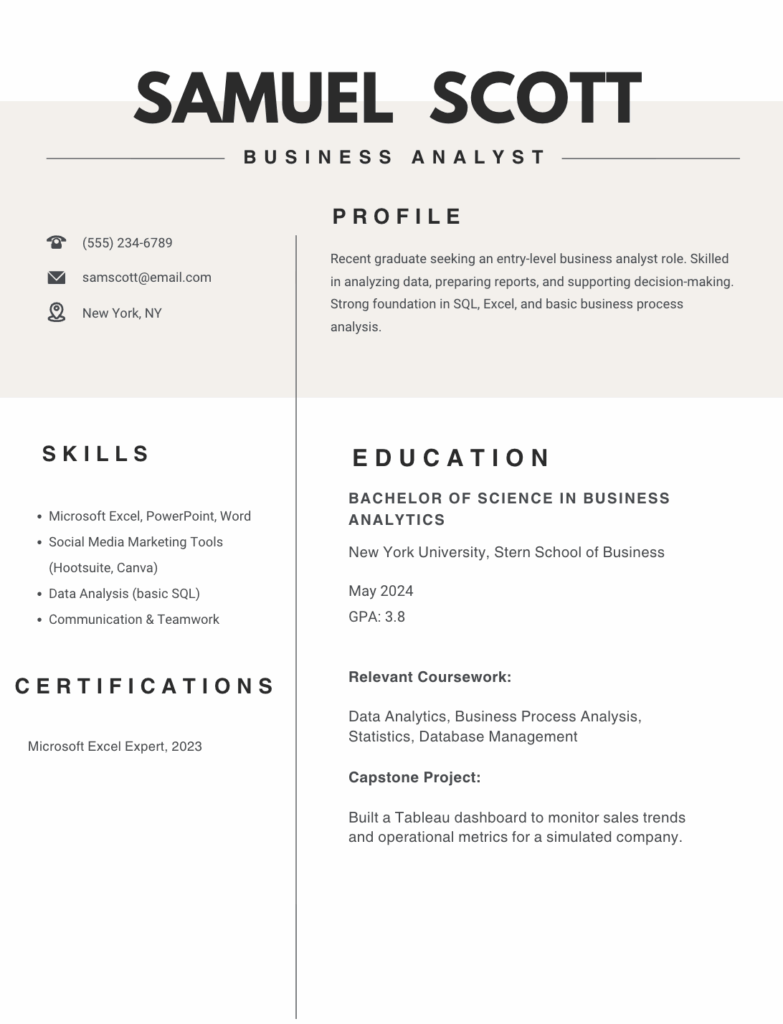
5. Sample Resume For Candidates with No Experience
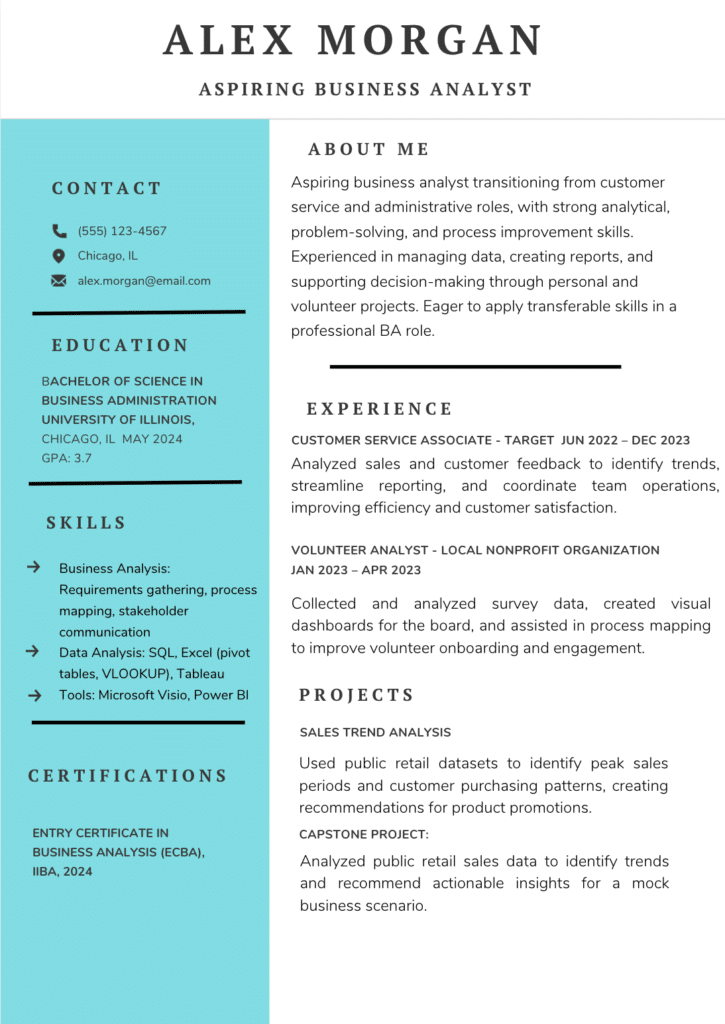
Common Mistakes to Avoid on a Resume
Entry-level candidates often make critical errors that eliminate them from consideration.
Avoid these common pitfalls to strengthen your resume:
- Overloading with Irrelevant Experience: Don’t list jobs or tasks that don’t highlight analytical or business skills. Every entry should show transferable achievements.
- Skipping Industry Keywords: Failing to include critical business analyst terms can prevent your resume from passing ATS scans. Make sure key phrases appear naturally in your descriptions.
- Ignoring Metrics and Results: Avoid only describing duties; focus on measurable impact to demonstrate real contributions.
- Neglecting Soft Skills: Don’t overlook teamwork, communication, or problem-solving skills — they are critical for entry-level BAs.
Ready to advance your medical career?
Our free healthcare resume templates and examples provide the perfect foundation for crafting a resume that showcases your clinical skills and experience.
Conclusion
Turn every role into business-relevant achievements using specific metrics and industry keywords.
Make sure your resume reflects the attention to detail and structured thinking that business analysts apply on a daily basis.
Customize each application by studying the company’s industry, challenges, and job requirements. Align your coursework and terminology with their focus.
Clean formatting and ATS compatibility help ensure your resume stands out to recruiters and hiring managers.
Launch your business analyst career by crafting a compelling resume today, and share your challenges or success stories in the comments below!
Frequently Asked Questions
How Long Should an Entry-Level Business Analyst Resume Be?
Keep it to one page maximum. Entry-level candidates often lack sufficient relevant experience to justify a two-page resume, and hiring managers prefer concise, focused resumes.
What if I Have No Internship or Work Experience?
Focus heavily on academic projects, group assignments, volunteer work, and relevant coursework. Include any data analysis projects from school, even basic Excel assignments that show analytical thinking.
Can I Use the Same Resume for Business Analyst and Project Coordinator Roles?
No. While there’s overlap, business analyst resumes should emphasize analytical and requirements-focused skills, while project coordinator resumes highlight organizational and scheduling abilities.










